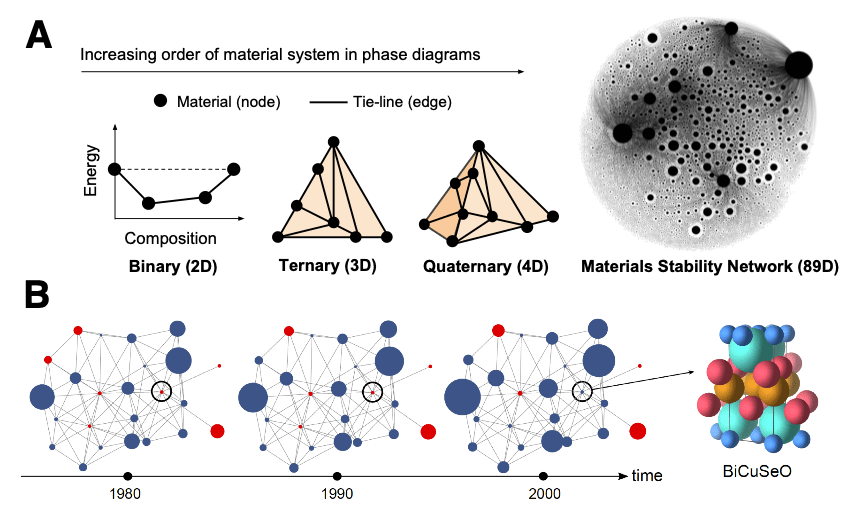(A) Network representation of materials phase diagrams. The schematic illustrates phase diagrams or convex hulls, and their representation as networks with materials as nodes and tie-lines as edges. (B) Time evolution of the local environment of BiCuSeO in the overall “material stability network.” Known materials are shown in blue and those yet to be discovered as shown in red.
Materials synthesis is a complex process that depends not only on thermodynamic stability, but also on kinetic factors, advances in synthesis techniques, and the availability of precursors. This complexity makes the development of a general theory for predicting synthesizability extremely difficult. In NU-MRSEC IRG-2, a novel approach for predicting synthesizability has emerged from the dynamics of the “materials stability network,” by combining network representations of materials phase diagrams calculated with density functional theory and experimental discovery timelines extracted from citations. The time-evolution of the underlying network allows machine-learning to predict the likelihood that hypothetical, computer-generated materials will be amenable to experimental synthesis.

